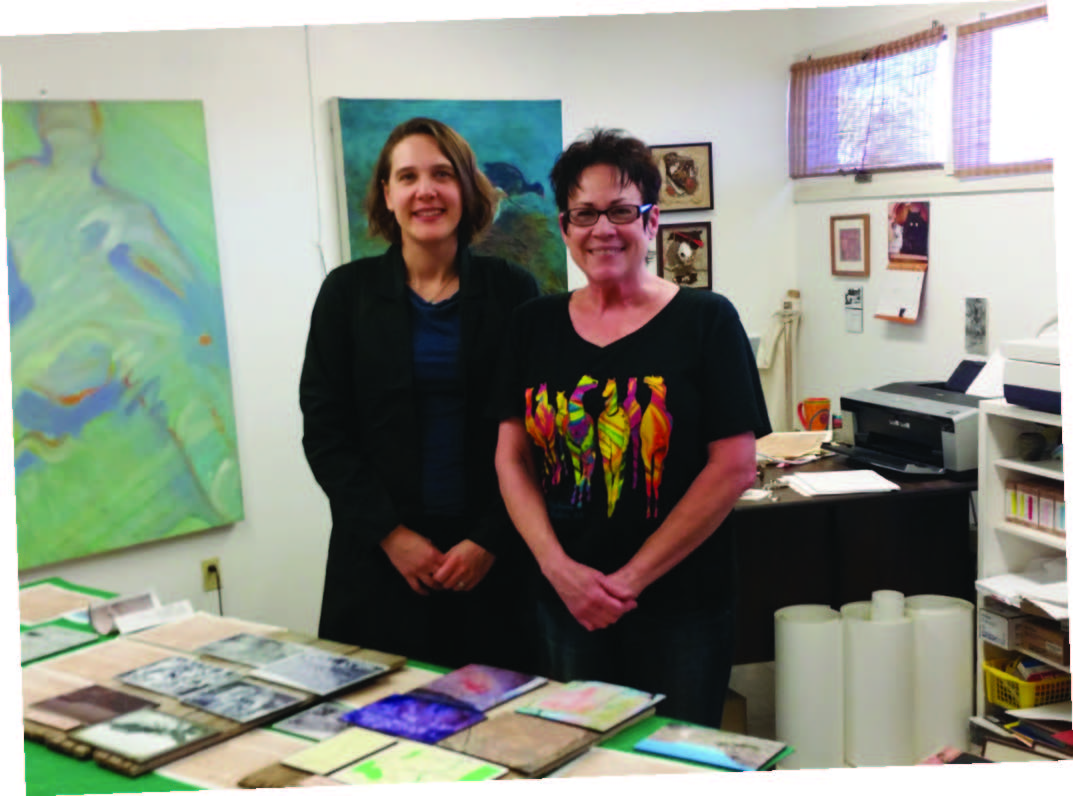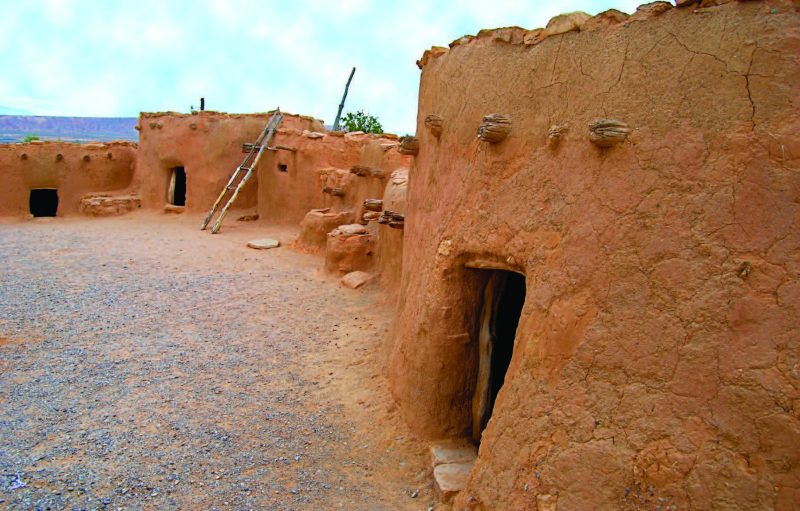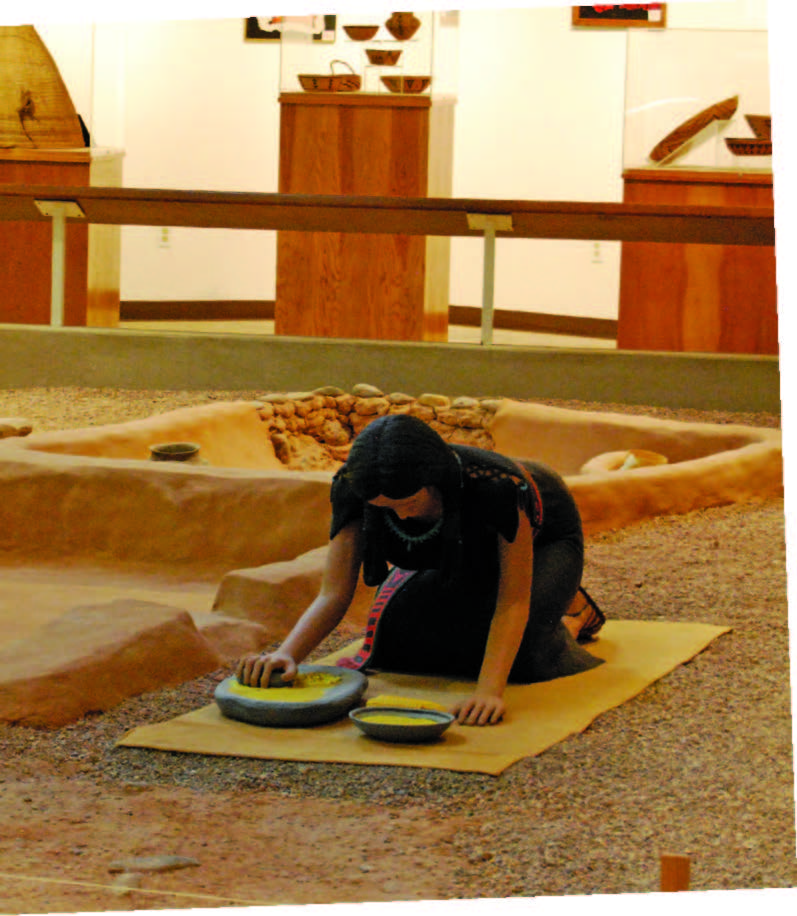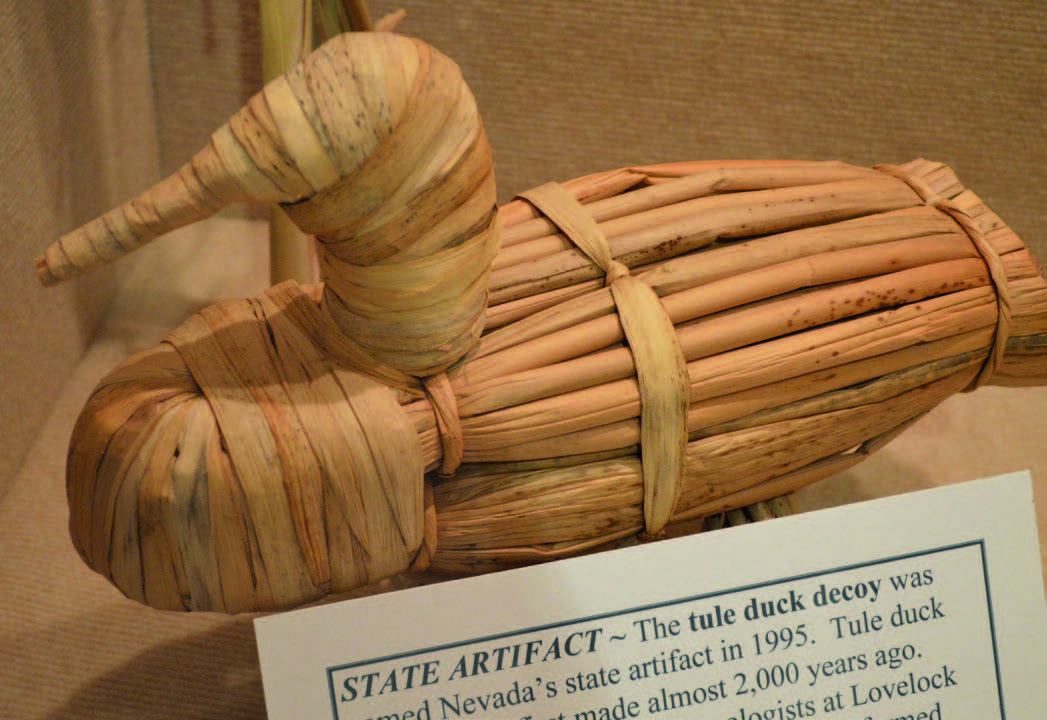Lost City Museum
January – February 2016
Exhibit pays tribute to once-thriving towns.
BY JANET GEARY

Traveling to Mesquite—about 65 miles from Las Vegas on Interstate 15—takes you through a section of the beautiful Moapa Valley, but to really experience it, you need to take State Route 169 south and head to Overton. Overton was originally settled in 1869, and was the location of the only store in the lower Moapa Valley. In the 1930s, the town of St. Thomas was submerged by water as Lake Mead was being filled, and the majority of its population relocated to Overton. After that, Overton developed as the main core of the business community in the lower Moapa Valley. Be sure not to travel too quickly through this beautiful valley of horse properties and gorgeous vistas, though, or you will miss one of the Nevada State Museums hidden gems: the Lost City Museum.
LOST, BUT NOT FORGOTTEN
 In 1935, the museum was built atop the original archaeological dig where an active Anasazi community lived between 300 B.C. to A.D. 1150, part of which is preserved inside as an exhibit. The mission of the museum is to study, preserve, and protect prehistoric Ancestral Pueblo (Anasazi) and other cultural sites and artifacts of Southern Nevada. The museum was listed on the National Registry of His- toric Places in 1996 and includes reconstructed Pueblo houses, and a well-stocked gift shop featuring Nevada treasures and books.
In 1935, the museum was built atop the original archaeological dig where an active Anasazi community lived between 300 B.C. to A.D. 1150, part of which is preserved inside as an exhibit. The mission of the museum is to study, preserve, and protect prehistoric Ancestral Pueblo (Anasazi) and other cultural sites and artifacts of Southern Nevada. The museum was listed on the National Registry of His- toric Places in 1996 and includes reconstructed Pueblo houses, and a well-stocked gift shop featuring Nevada treasures and books.

LAND OF THE LOST
 The boom and bust of the silver and gold strikes in Nevada are well-documented, but some of these towns have most unusual histories. Take St. Thomas for example: when Boulder Dam was built on the Colorado River, the residents of St. Thomas were forced out of their homes because the dam caused the Colorado River to flood the town. Now that Lake Mead’s water level has fallen dramatically, you can see some of the remnants of the buildings that have been under water for 80 years.
The boom and bust of the silver and gold strikes in Nevada are well-documented, but some of these towns have most unusual histories. Take St. Thomas for example: when Boulder Dam was built on the Colorado River, the residents of St. Thomas were forced out of their homes because the dam caused the Colorado River to flood the town. Now that Lake Mead’s water level has fallen dramatically, you can see some of the remnants of the buildings that have been under water for 80 years.
The museum’s latest exhibit studies all the lost cities in southern Nevada, focusing on the reasons these communities were established and why they no longer exist. From Caliente and Delamar following the Meadow Valley Wash south to the towns of St. Joseph and St. Thomas, then to Eldorado and down to the Colorado River, the exhibit highlights each town along the way, telling the story of its rise and fall. Whether it was because of a mining strike, the railroad’s path, or a multitude of other reasons, the story of the ghost towns of the Moapa Valley will come alive with historical photos and well-documented stories written by Museum Curator and Archaeologist Molly Fierer-Donaldson, Ph.D. Then, much like a graphic artist designs pages of Nevada Magazine, Denise Sins, exhibit preparator II, creates visual images on the walls of the museum, using photos and artifacts donated by families of the pioneers that previously inhabited the areas. Many photos are from museum archives; however, they also comb the University of Nevada’s photo collections as well as the state archives. The result is a riveting visual history lesson that will stay with the observer long after their visit to this unusual museum.
Museum Director Jerrie Clarke is excited about the new addition—set to open by Jan. 15—which is replacing the sesquicentennial exhibit that celebrated the state’s 150th birthday.
“Even if you’ve visited the museum in the last year,” she says, “it’s worth another trip here just to see this new exhibit.”

 GET FOUND
GET FOUND